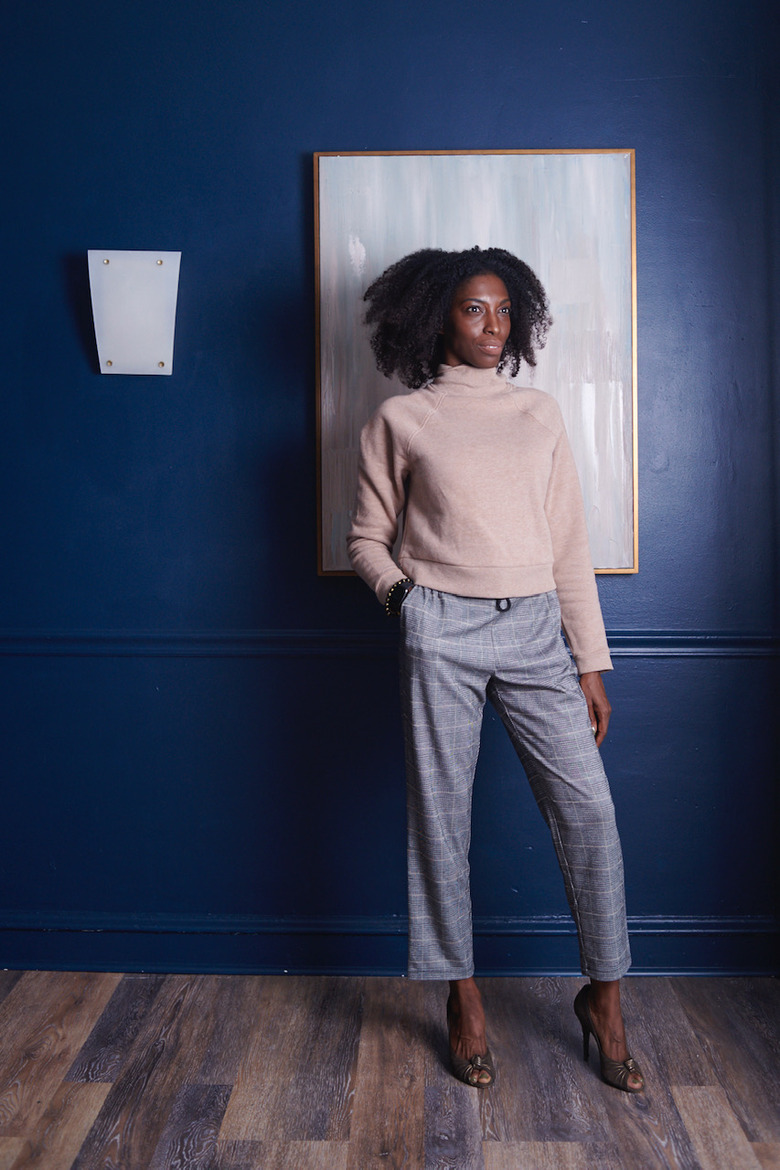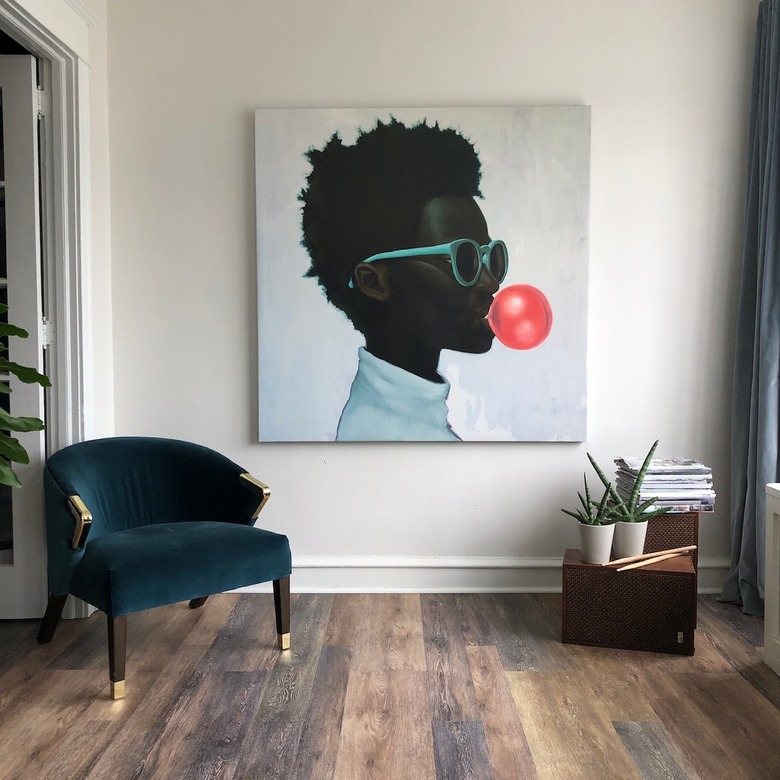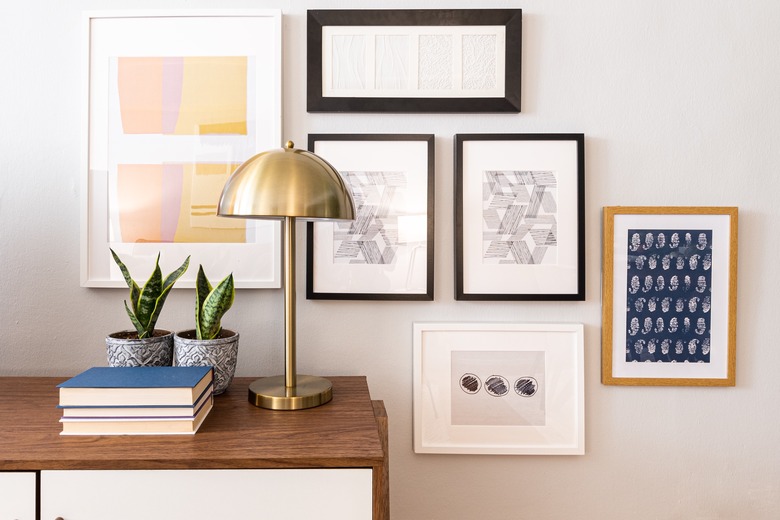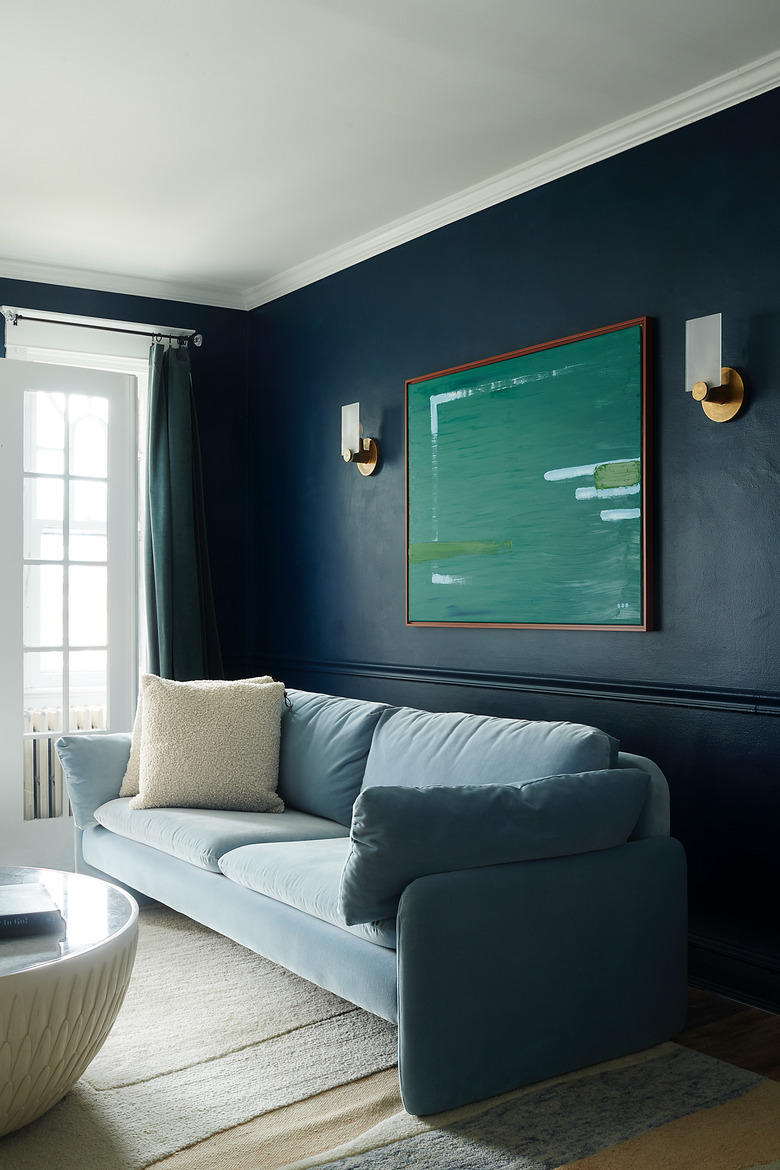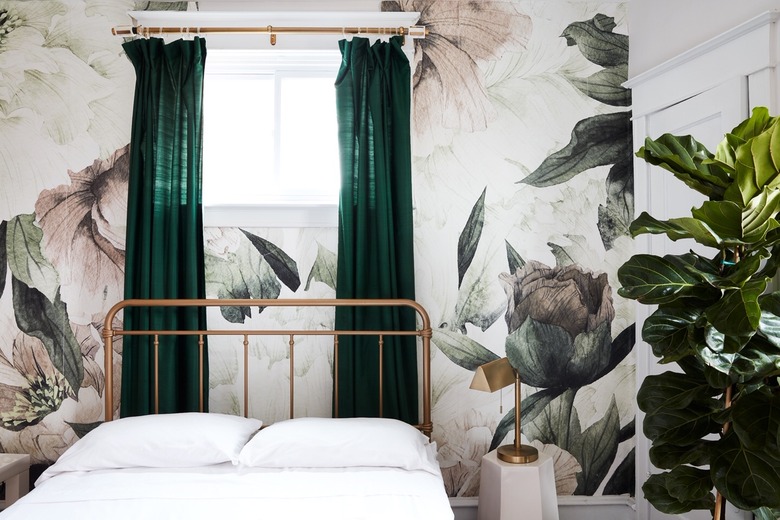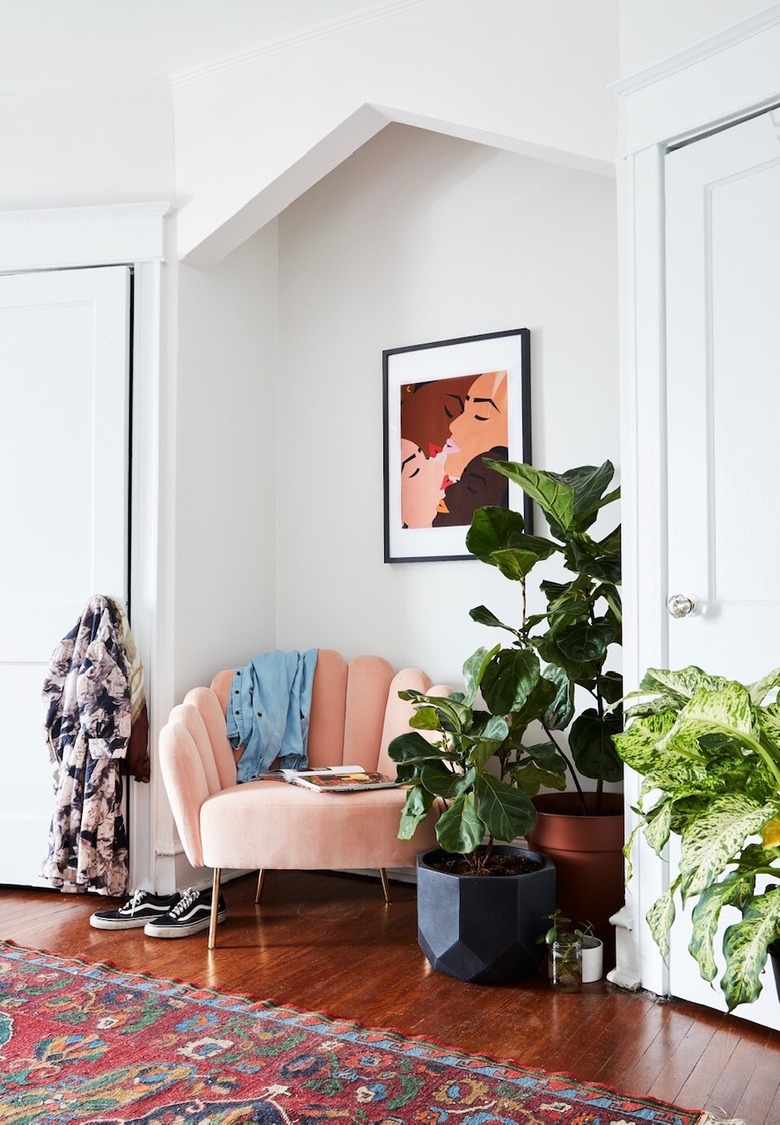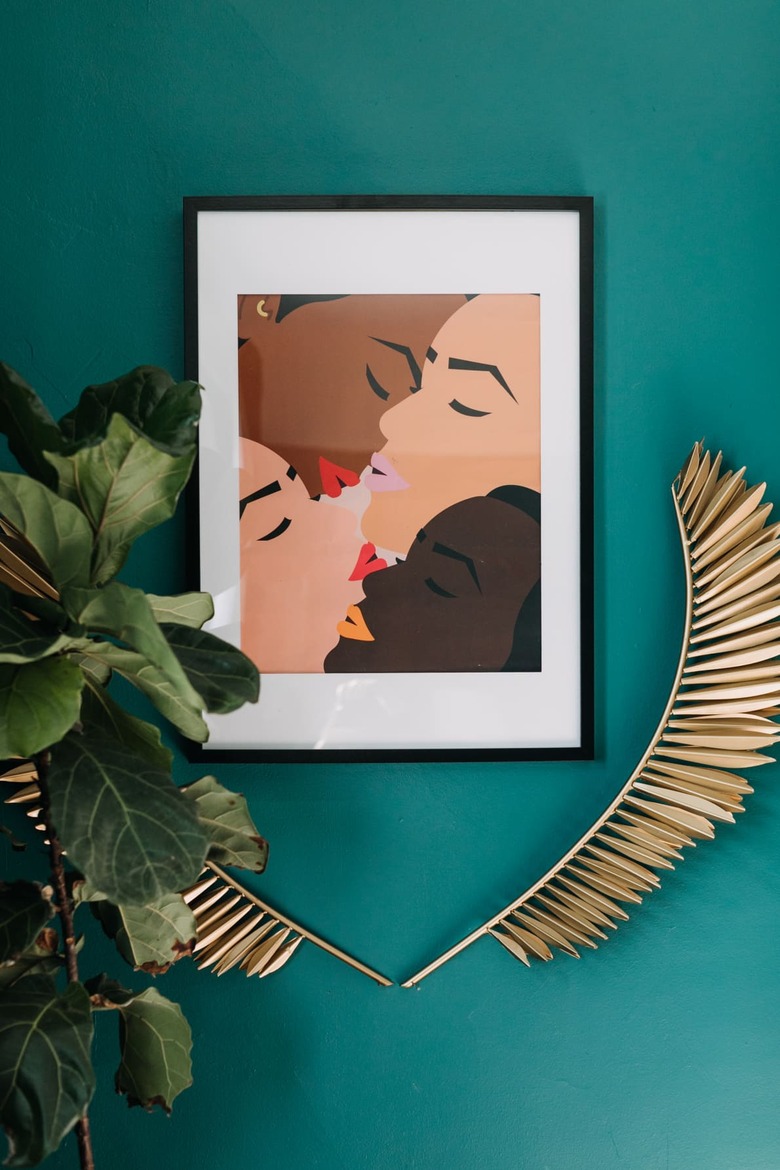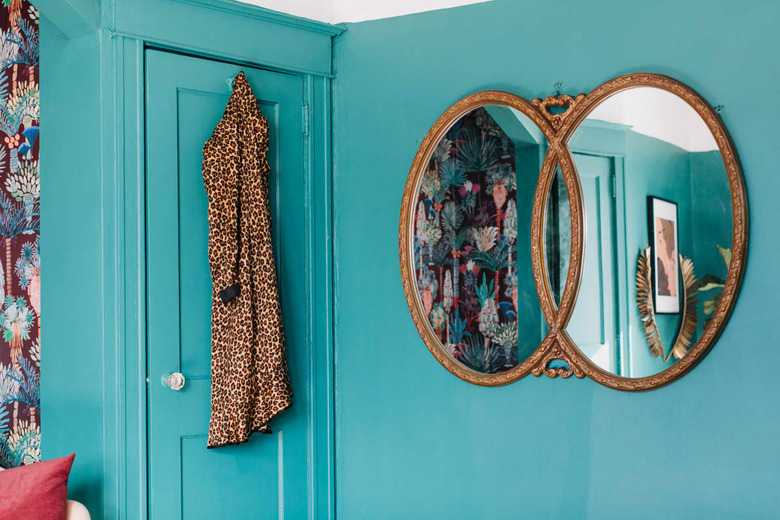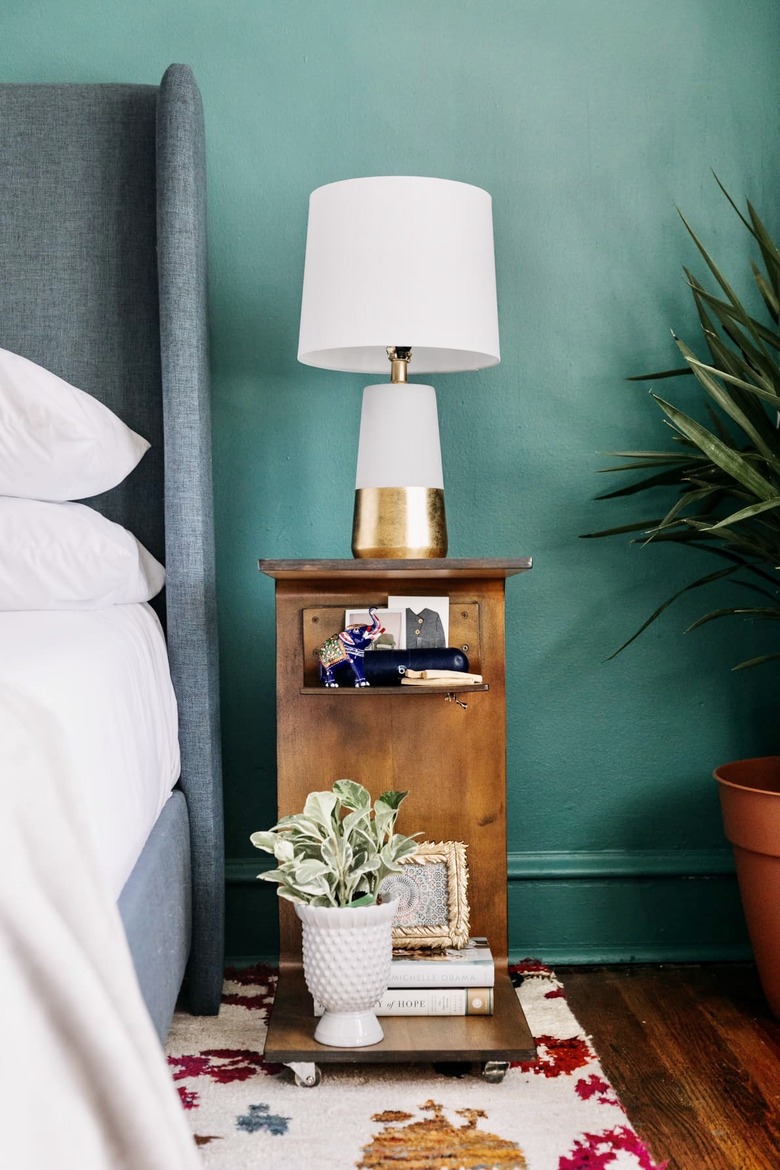Hunker Down With Designer Chanae Richards Of Ọlọrọ Interiors
If there was one good thing that has come from my many hours spent scrolling mindlessly through Instagram (seriously, where does the time go?!), it would definitely be stumbling across the feeds of cool creatives. One such happy accident was the day I discovered Chanae Richards, the founder of ọlọrọ interiors (which in the West African language Yoruba, means "rich" — a play on her last name.) Besides being a super-talented designer and business owner, it turns out that she's also just a really cool, and down to earth person, too.
Richards splits her time between Philadelphia and Harlem (see, I told you ... cool!), working on projects that range from interior design to production design. But, she didn't always know this was the path she was meant to follow. Like a lot of us, she took a few twists and turns along the way. All of which led her to become the fierce, business-savvy woman that she is today, and with a flourishing design firm to boot. Busier than ever, with her days starting at 5:30 a.m., Chanae was kind enough to hunker down with me for a few minutes to chat about work, life, and of course, her beautiful home.
Hunker: Your background is in finance. What motivated you to switch careers?
Chanae Richards: My background was in nonprofit finance. I was an operations director for a nonprofit for quite some time before I started the firm. And what a transition it was! I had no schooling, no preparation to own a business, but knew I had this idea that I wanted to try something different, different than anything I've ever done before. And it has been a rocky road, but here we are, we made it ... There's that trepidation about what it is that you're doing and whether or not you have enough skill or talent or gumption to start something, to hang your own shingle. And whether or not you can make any money, if it will be viable. Those are all very important questions — will this work? And sometimes it feels like it's not working, but then there are other times when it's quite dreamy ... yeah, that's how I would describe it right now, as dreamy.
Hunker: What's been your experience as a Black woman in the design industry?
CR: I don't know what it is to be a white woman in any industry, but I know what it is to be a Black woman — especially with my complexion. I am chocolate brown and my skin has been kissed by the sun and my hair is very, very big, and you cannot miss me. And some folks have been intimidated by that, and I don't know sometimes what the implications look like — you know, I have never walked into a showroom and felt like I didn't belong.
Now, the other part of that is [that] I didn't know about showrooms for a long time. So I think a part of it is not knowing what's out there because there are certain things that we are not always exposed to and included in — so sometimes you don't know what you don't know. And then you know there is the press part of it. Of course, the press now is heavy, but I didn't know that Black designers existed until I was 33 ... So it's just seeing what you can become. [Seeing what] perhaps wasn't there, especially for me growing up in the Bronx, I didn't see any Black interior designers.
Hunker: I completely agree. I'm mixed and while going to design school and working in the field of hospitality design, I definitely wasn't learning about or working with anyone who looked like me. And I think that's a really important point when you are trying to find your way in life and figure out what you want to do.
CR: Yeah, just seeing what you can become is a part of it. But on the other side of that though, I think my transition was successful because you know you take risks. This thing has been a huge risk.
Hunker: Getting to your personal style and your home, how would you describe your home?
CR: I'm a minimalist. My goal with my own space and with the space of my clients is to bring life and richness with a minimalist approach. Sometimes you think of minimalism as dull, and boring, and drab, it doesn't have to be that. It can be what you want it to be and I do that — that's kind of my wheelhouse.
Hunker: What are some of your favorite home decor brands?
CR: Gosh! It changes from time to time, but I love CB2, of course. Poly & Bark, I just discovered their pieces and I like them. I like to figure out what my friends have first, so Remix Living [by Dominique Calhoun] here in Philadelphia — is a Black-owned furniture retailer, the only Black-owned furniture showroom owned by a woman here in Philly. I try to see what she and Ariene Bethea of Dressing Rooms Interiors Studio in Charlotte have first before I make decisions on a lot of other places.
Of course, you know the big retailers exist — West Elm, Anthropologie — they're all beautiful and you can make a space out of that, but [when] building a home and creating layers you need pieces that you're not going to find in your big box stores, and those [can] come from anyone. Those come from your artists that are perhaps still in design school. Those come from friends of yours who you know make great crafts. It comes from so many different places, not just big box stores ... That's a big part of my work — ensuring that a place feels lived in and feels loved on. That it's not just something that you can see on an Anthropologie website or in a magazine, my spaces don't feel like that. They feel like you could really live there.
Hunker: Many people are working from home right now. Do you have any WFH must-haves?
CR: (laughing) Alcohol. Great wine glasses. A carafe ... um, I would say bedding. We spend a lot of time in bed, and there are those days that we want to sleep in late and some days that we don't get up because there are so many things that are heavy right now and there are some days that we have to linger in bed a little bit longer. And to make that sweeter I think that bedding is something that is overlooked. And we don't talk about it — it's like, Get a new sofa. Yeah, you're going to spend a lot of time on the sofa but then get some sheets that you like. Get a comforter that you like so that you can lay on it on that sofa. So that's the piece, the bedding piece, that I think gets neglected.
Hunker: Do you have a morning routine or ritual?
CR: I do. Every morning I get up and I put on a playlist depending on the kind of day it'll be. Sometimes it's Anita Baker and other times it's Future — I may need some trap music to get me through that day. And I have lemon water — warm water with lemon — and my assistant sends over the list for the day that breaks down all of the things that I have, the meetings that I need to have ... it breaks everything down for me by section, and I have that sectioned out with personal time for me in there every single day, so that's on my to-do list. So I look through that to-do list and I try to have breakfast, but it's definitely tea, definitely music, and then I light candles and start whatever it is that I have to do on that list. I start my days really early, so I get up at about 5:30 every morning.
Hunker: You mentioned that scheduling personal time is important to you. What do you do to relax and decompress when you take time for yourself?
CR: Nap. I like napping. I believe that naps are revolutionary ... I clean my plants and water plants and try to garden a lot — My hands in soil is really, really therapeutic. And I cook. So those are things that I do, and that's why I think [staying at home during] the pandemic has been alright with me because all of my favorite things to do are right here.
Hunker: What DIY project are you particularly proud of?
CR: My studio. It's called a studio but it's actually the garage. The garage was not anything fancy or pretty, it literally looked like a garage with holes in the wall from old plumbing work. So we patched the holes, painted it black, and hung string lights. And it was the most rustic and easy thing to do to change the feeling. You know you're in the house all day, and my house looks and feels a certain way ... but I wanted to turn the garage into something different. And so it feels like a club, it feels like a studio sometimes, but it definitely does not feel like home. We can have the after-party right there — it doesn't feel like a house. It does feel like a mini club downstairs.
Hunker: Earlier you mentioned your plants. Do you have a favorite?
CR: My kangaroo fern is my favorite by far. It doesn't need a lot of light and I think sometimes we neglect the plants that shine even when they don't need a lot of light. This plant has been growing and I've been giving it light and care, but I hadn't even looked at it this year until I realized it's about three times the size it was last year. And it was still growing even when I only gave it a little bit of light. And so I want to honor that plant because even though it's in a better place now — I'm giving it a little bit more light — it still shined for me and I appreciate that.
Hunker: Do you have anything in your home that has been handed down?
CR: I have a bust from my uncle. He's still living ... he's fine. But a sculptor — he said he won't share this story with me until I'm much older and I don't know how much older because he's been saying that now for a very long time. But he says a sculptor gave this to him in 1977, but I believe it's him, I believe that someone made it of him. In my heart of hearts, that's what I think. And so I'm just waiting for this story. I have it, it's here, it's in my living room with me — it's on the mantel. I know it's something wild 'cause he's a wild guy. And I just want to know: What age? I'm 37 now. How much longer, sir?
Hunker: In terms of decor, how do you get your home ready for fall?
CR: I bring in a lot of my plants for fall. So all of the plants stay outside during summer and they come in during fall. So this is kind of a new space for me, I've had like an empty house all summer, I was an empty nester and now all of these plants are in, and that feels fall enough for me. But I encourage folks to bring in plants in other ways — dried leaves, eucalyptus, and things like that, that are fall-inspired — and of course, pumpkins, gourds, and all that stuff. But I just believe in bringing more of the earth inside, and so anything that's tree-inspired I'm for.
Hunker: What design trends do you think will be big next year?
CR: I struggle with that question and here's why. I think a lot of people are thinking about their homes as their place of peace and refuge, and my mind always goes to people that don't have homes. And so I think a lot of the trend will be sustainability and how we can use what we have to create new. I think DIY will be bigger because folks are losing incomes and losing their homes and won't have the [money] to buy the new furniture. The middle class is slipping and folks are falling into poverty. And so when I think of trends I think about what is happening globally, and folks may have to DIY it more to get the level of home that they want because they won't be able to afford the same luxuries as they did in the past.
Hunker: What's next for you?
CR: A couple of things. My work was featured at the Democratic National Convention. One of the speakers is a client of mine and I'm really excited to get that place shot because it hasn't been photographed yet. And so we staged her place right before she spoke at the Convention. She also was the first person to interview Vice Presidential nominee Kamala Harris using the background that we built out for her — so some of the work that I do is in the national spotlight and I'm excited about that.
What's next is ... I guess a couple of weeks ago I was announced as a Mural Arts Fellow here in Philadelphia. And I think ensuring that we bridge the gap between art and design in our communities is something that is very important for me and meaningful in our firm's work and so I want to do more of that ... I want to think about the community and how this work impacts the folks that live in and around the communities that I grew up in and that I live in because it's important! It's important stuff.
